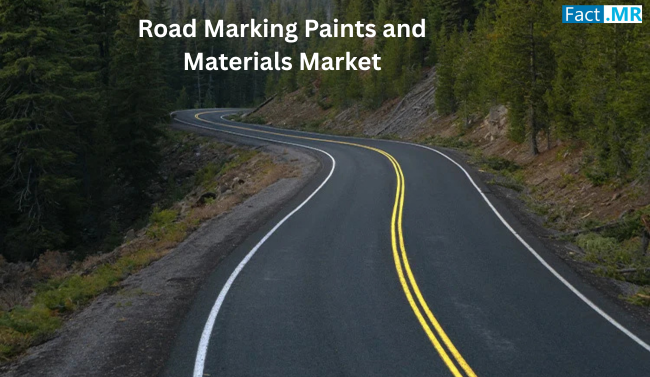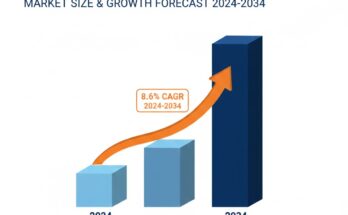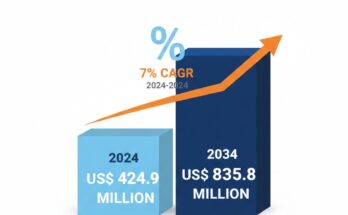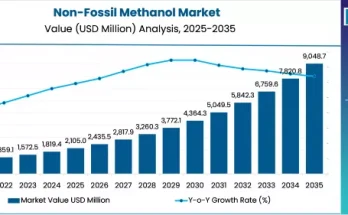Road marking paints and materials are fundamental to maintaining order and safety across global transportation networks. These coatings provide essential visual guidance for drivers, cyclists, and pedestrians—enhancing visibility in all lighting and weather conditions while significantly reducing the risk of accidents. Whether on highways, city streets, or pedestrian zones, well-applied markings are key to efficient traffic flow and improved public safety.
With the rapid pace of infrastructure development and a growing emphasis on road safety, the road marking paints and materials market has become a vital segment within the broader paints and coatings industry. Governments, municipalities, and private contractors are increasingly focused on adopting sustainable, long-lasting, and high-performance solutions. As a result, the market is witnessing continuous innovation in materials, application methods, and smart technologies—driving new trends and unlocking fresh opportunities for stakeholders across the transportation ecosystem.
Market Dynamics and Drivers
Infrastructure Expansion: Ongoing investment in road construction and maintenance projects worldwide is fueling demand for marking solutions. New highway developments, urban roadway upgrades, airport tarmac refurbishments, and parking facility expansions all require effective marking materials to ensure clarity and compliance.
Safety Awareness and Regulations: Stringent safety regulations and traffic management requirements have made high-quality road markings essential. Authorities increasingly mandate retroreflective materials, skid-resistant coatings, and markings that perform well in varied weather conditions to reduce accidents and improve road user guidance.
Environmentally Friendly Formulations: Concerns over emissions and environmental impact have accelerated the adoption of waterborne and low-VOC paint systems. Eco-conscious governments and regulatory bodies are pushing manufacturers toward sustainable, less toxic formulations without compromising performance.
Technological Advancements: Ink and polymer innovation is enhancing durability and visibility. Performance-based materials—such as thermoplastics, cold plastics, and preformed pre-coated tapes—offer superior longevity and reflectivity. Meanwhile, the integration of AI-enabled application systems and smart markings with embedded sensors signal the next stage of “smart road” technologies.
Market Segmentation
By Material Type
- Paint-based materials: Traditional solvent and waterborne paints remain popular, with epoxy and acrylic variants offering strong adhesion and quick application—ideal for most roadway markings.
- Performance-based materials: Thermoplastic and cold plastic options provide enhanced durability, rain-fastness, and skid resistance, suitable for high-traffic zones. Preformed tapes and composite materials cater to specific applications like parking spaces and airports.
By Application
- Roads and highways: The largest and most consistent demand driver, given the sheer length of paved lanes worldwide.
- Parking lots and facilities: Both commercial and residential properties increasingly invest in visible, durable markings to optimize vehicle flow and safety.
- Airports and airstrips: These require specialized material formulations that meet aviation standards for runway markings—reflective, weather-resistant, and abrasion-proof.
- Industrial and factory floors: Indoor guidance lines, loading-zone demarcations, and safety boundaries rely on marking materials that resist chemical exposure, heavy wear, and industrial traffic.
- Recreational and specialty areas: Stadiums, sports courts, playgrounds, and pedestrian zones also employ customized paints for aesthetics and safety.
By Application Method
- Manual application: Traditional spray and roller techniques, suited for small-scale or detailed work.
- Machine application: Mechanized equipment enables fast, consistent, and precise line painting—crucial for large-scale road systems.
- Specialized systems: Preformed tape applicators, thermoplastic melters, and robot‑assisted sprayers support efficiency and quality in high‑volume or regulated projects.
Regional Insights
North America: Characterized by mature infrastructure and strong regulatory oversight, this region sees steady adoption of advanced marking technologies. Skid-resistant coatings and retroreflective layering methods are increasingly standard in highway maintenance programs.
Europe: Rigorous environmental standards and safety mandates drive the market toward sustainable, high-performance solutions. Countries with harsh winter climates employ cold-pound-applied materials that resist snowplows and temperature cycles.
Asia Pacific: One of the fastest-growing regions, thanks to rapid urbanization and renewed focus on road safety. Significant investments are channeled toward highway construction and smart‑city projects, spurring adoption of durable road marking technologies in China, India, Southeast Asia, and Australia.
Middle East, Africa, Latin America: These markets are evolving, with demand tied to regional infrastructure upgrades. Public‑private partnerships, airport expansions, and tourism infrastructure growth boost market activity, although regulatory variability can slow product standardization.
Key Trends & Innovations
- Retroreflective bead integration: Many materials now feature microbeads embedded in the paint or thermoplastic layers, improving visibility at night without external lighting.
- Cold-application thermoplastics: These formulations eliminate the need for heat, reducing logistical costs and hazards associated with hot-applied systems.
- Smart road technologies: Pilot systems incorporate sensors and RFID tags within markings, paving the way for vehicle-to-infrastructure communication and future autonomous navigation.
- Sustainable materials: Recyclable and biodegradable marking tapes, water-based paints with ultra-low VOC emissions, and penetration-resistant coatings address environmental goals.
- AI‑enabled application equipment: Automated sprayers and laser-guided road-marking robots ensure consistent thickness, width, and placement, reducing waste and labor dependency.
Competitive Landscape
The market features a mix of global conglomerates and specialized players:
- Sherwin-Williams, PPG Industries, Nippon Paint, AkzoNobel – leverage extensive coatings expertise to offer broad palettes of paint-based and performance-based products, backed by R&D and international distribution channels.
- 3M, Geveko Markings, Ennis-Flint, Swarco – focus on high-end specialty materials such as retroreflective tapes, thermoplastic granules, and AI-ready systems. They partner with governments for large-scale smart-road initiatives.
- Local/regional specialists – serve niche markets with tailored solutions compliant with unique safety, weather, and traffic demands.
Industry leaders pursue growth through product innovation, acquisitions (e.g., Swarco’s acquisition of road marking firms), and strategic partnerships to enter new geographies.
Market Challenges
- Raw material price volatility: Fluctuating petroleum and pigment costs affect margins, especially in solvent‑based products.
- Logistical complexity: Hot‑applied thermoplastics demand specialized equipment and trained operators, raising project costs and limiting flexibility.
- Regulatory fragmentation: Varying standards across regions complicate global product development and supply consistency.
- Environmental restrictions: Increasing restrictions on VOCs, microplastics, and hazardous solvents require continual reformulation and investment.
Outlook & Forecast
The global market continues expanding steadily, driven by new infrastructure expenditure and renovation of outdated networks. Paint-based materials maintain dominance in basic applications, while performance-based systems grow faster in high‑traffic and regulated zones. With the rise of “smart roads,” connected and sensor-embedded markings are slated to gain traction in the coming decade. Sustainable products—like cold-applied thermoplastics and biodegradable tapes—will play a key role as governments enforce green procurement policies.
Why This Matters to Stakeholders
- Infrastructure planners will benefit from longer-lasting marking systems, lowering maintenance cycles and improving safety metrics.
- Municipalities and highway authorities can leverage eco‑friendly formulations to meet environmental goals while enhancing traffic management.
- Contractors and applicators can differentiate with specialized equipment and high-precision application services—key for value-added contracts.
- Manufacturers and distributors must stay ahead with new technologies, regional compliance expertise, and responsive supply chains.
Conclusion
The road marking paints and materials market, while niche, stands at the intersection of safety, infrastructure development, and environmental responsibility. Ongoing innovation in materials and application technologies is reshaping how markings are specified, applied, and maintained. As urbanization and smart-city projects continue to surge, this market is poised for sustained growth—with future-ready solutions offering greater visibility, resilience, and connectivity.



